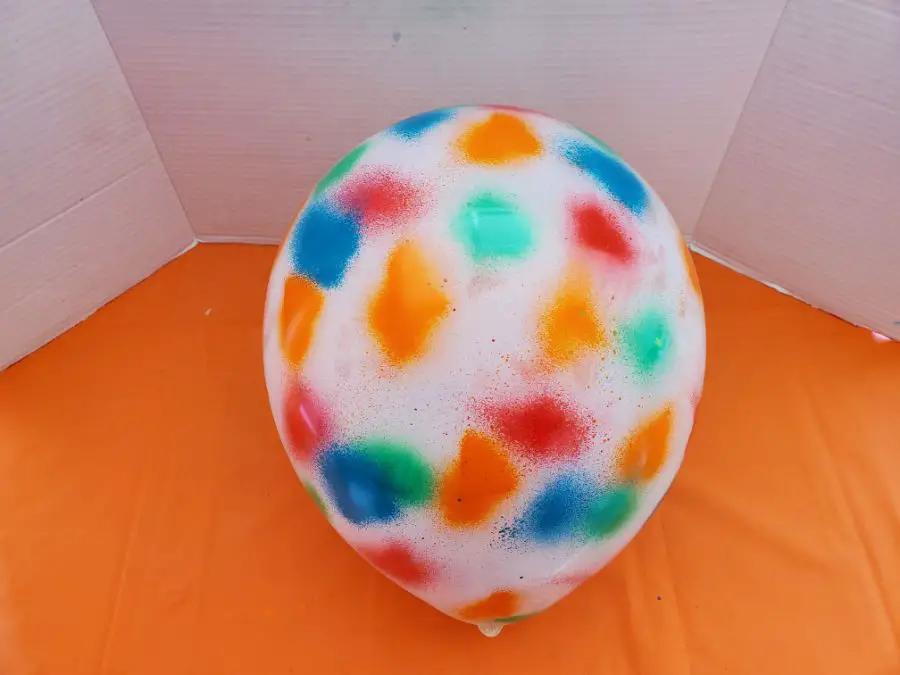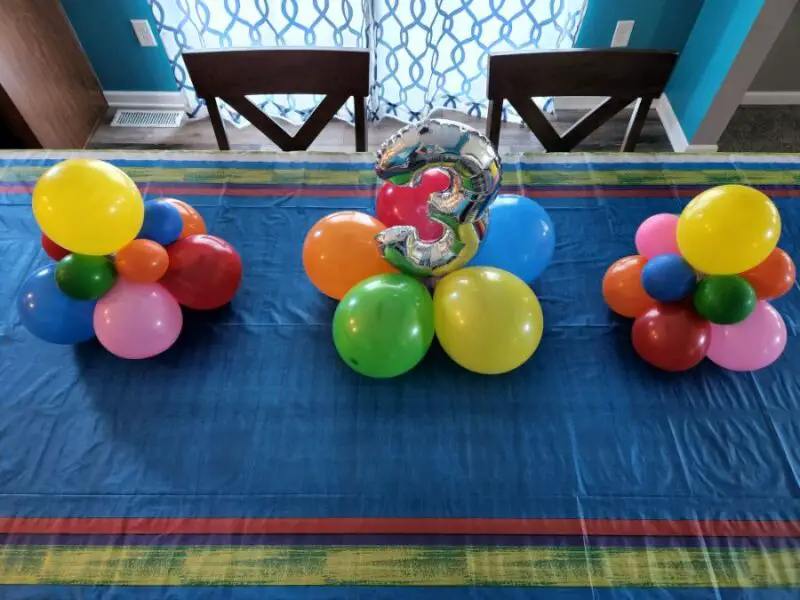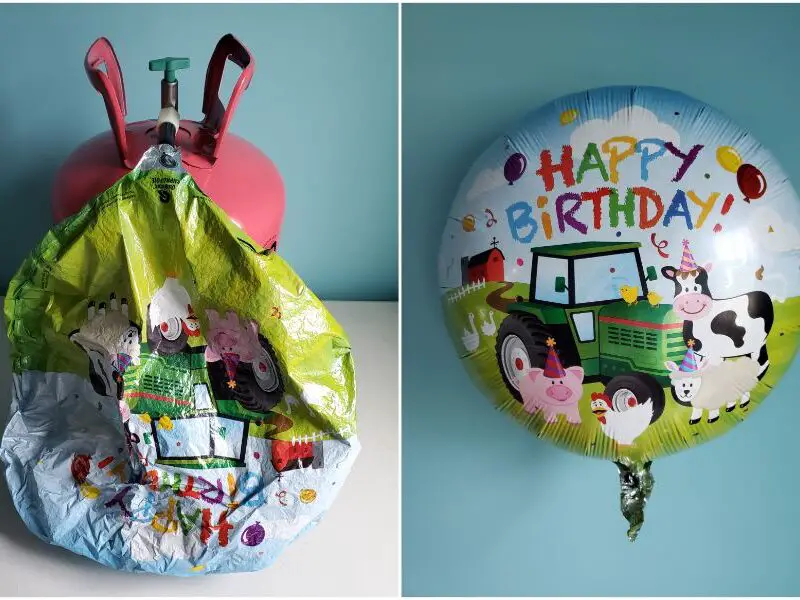There are so many different ways to enhance a balloon. So, you might be wondering, can you spray paint balloons?
The answer is yes! You absolutely can spray paint balloons.
Spray paint can be a bit tricky, but it is a fast way to add a little paint flamboyance to your plain balloons.
Read on to find out the most effective ways to spray paint your balloons!
Materials Needed to Spray Paint Balloons
1. Balloons
Of course, it’s a given, you need balloons! But, what kind of balloon can you spray paint?
You can spray spraint any type of balloon. I had success with spray painting both latex and foil balloons.
Foil balloons are made from a strong, pre-stretched plastic material. They will hold up great to any kind of spray paint coverage.
When it comes to latex, I recommend using a higher quality balloon if you can. I used both cheaper quality balloons and the higher quality – “helium quality” – balloons.
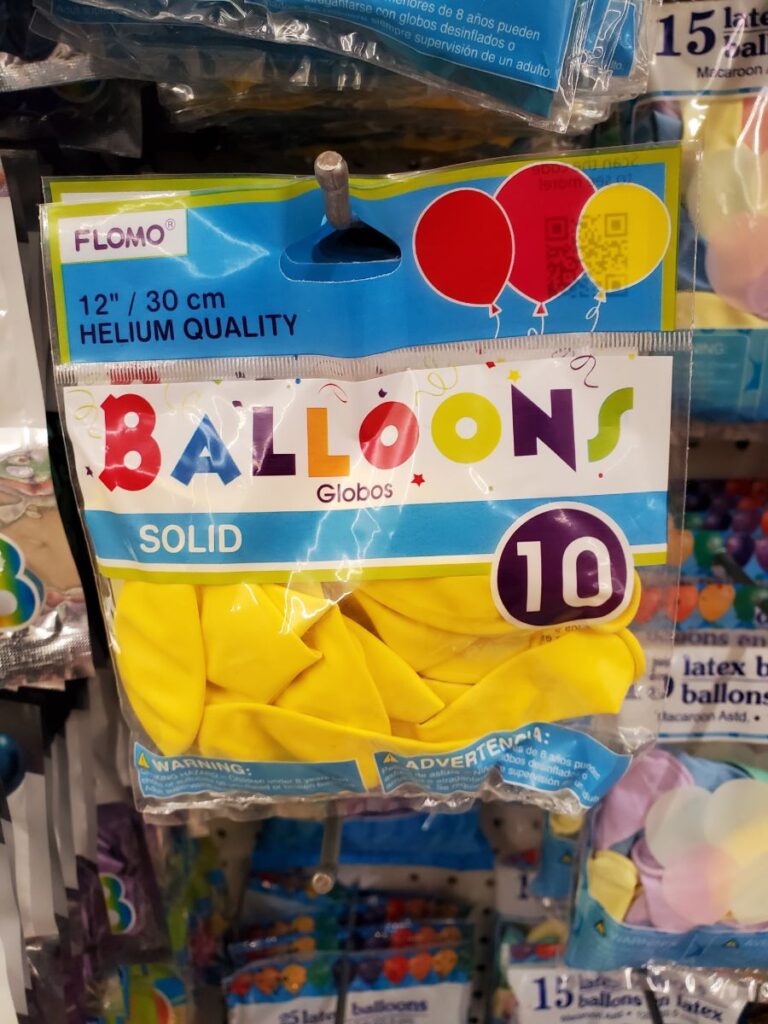
Both types of latex balloons held up to the spray paint. But, the “helium-quality” balloons, which are designed to last longer, stayed inflated longer than the cheaper quality.
Not to mention, using a higher quality balloon might mean that all your hard work won’t be blown to pieces by a premature POP.
2. Spray Paint
Not all spray paints are created equal. A cheaper spray paint is going to have less coverage and may be more runny.
Does that mean you have to buy the most expensive spray paint available? No!
Use a spray paint that offers good coverage. I used Rust-Oleum Ultra Cover spray paint, and it covered great – much better than the cheap spray paint that I had on hand.
Keep in mind, like painting anything, the amount of coverage may depend on the colors of both the balloon and the paint.

Use what you have on hand, or if you’re shopping – there’s tons of options. A lot of spray paints offer great coverage that bond to all different types of surfaces, like balloons!
Whatever paint you use, make sure to shake it really well before using it, so you get the best coverage possible.
3. Protective Equipment
First, it is always important to do any kind of spray painting in a well ventilated area. Wear a mask for extra protection from the paint fumes.
Put down a tarp, tablecloth, or cardboard to spray paint on so that whatever surface you are using does not get permanently damaged with spray paint.
And, if you want to go all out – throw on a pair of protective eyewear!
Extra Tip: Don’t have any food or drink near your work area. Spray paint particles will contaminate them.
4. Tape, Sticks, Stencils, And More
The type of spray painting you intend to do on your balloon will determine the other materials needed.
Balloon Sticks, Floral Foam, Etc.
If you want to spray paint a balloon with full coverage, I recommend finding a way to stand it up so that you can spray paint the balloon entirely in one go.
I used a balloon stick and some floral foam to do this. Or, simply hold the stick and move it as needed.
You may need to apply more than one coat to avoid paint dripping.
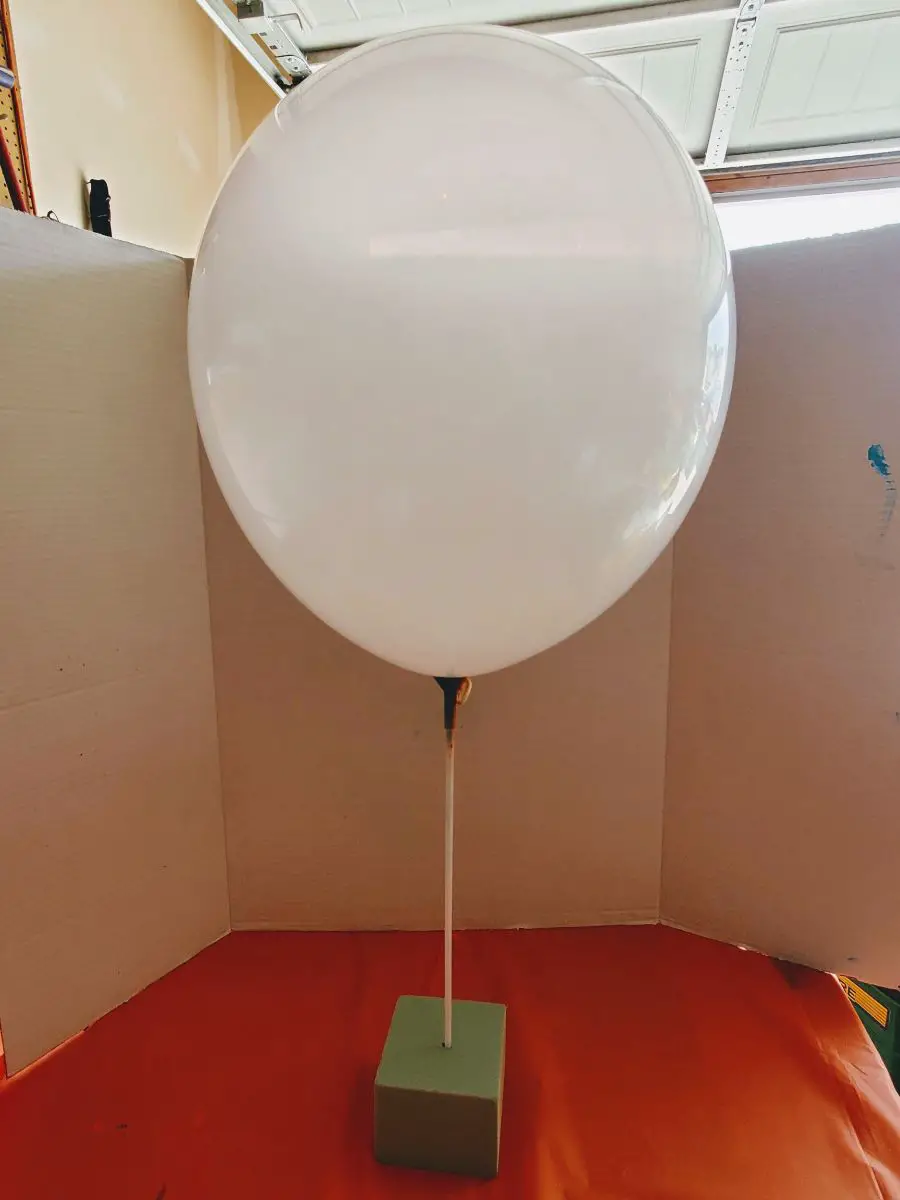
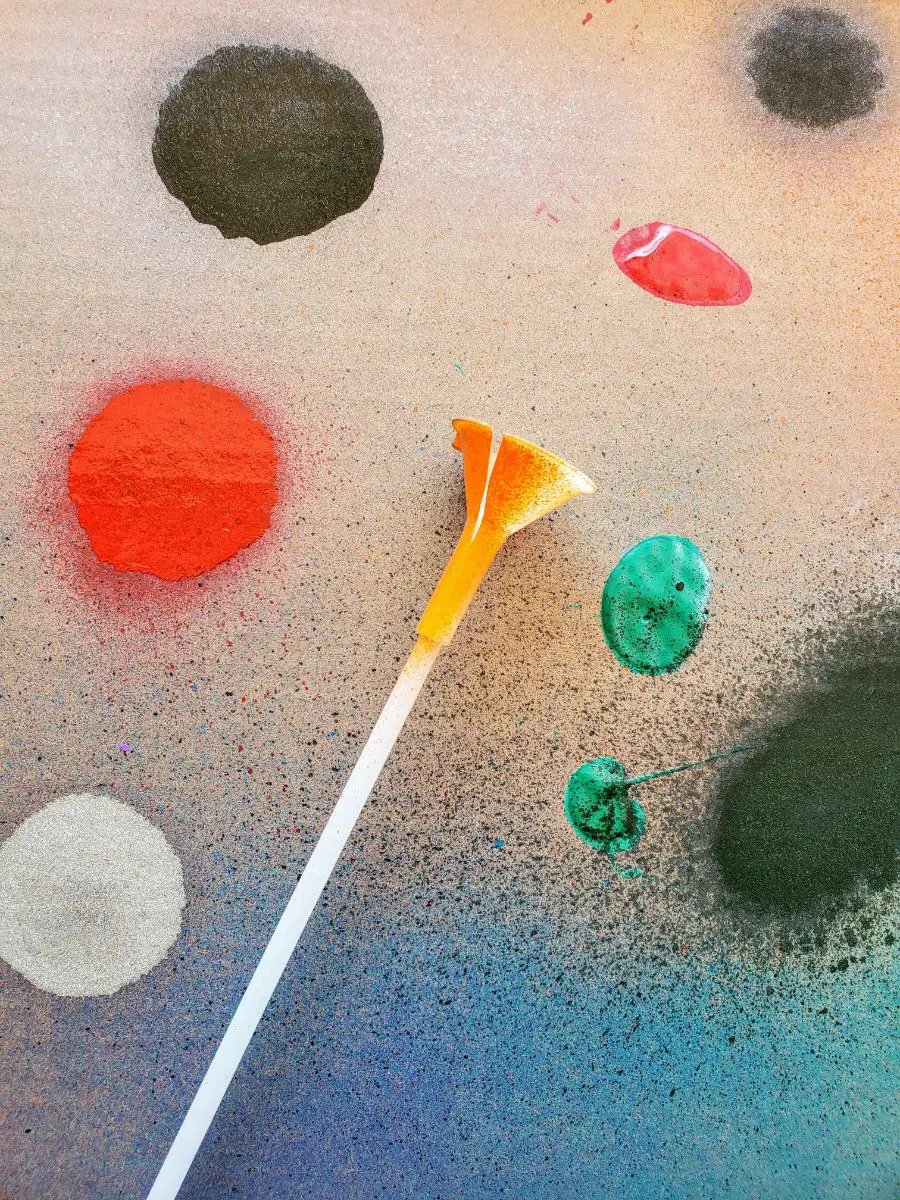
If you need to, get creative! I also found that using one of my kids’ sand buckets was the perfect size to hold a balloon steady!

Painters Tape
If you only need to spray paint one side, or one side at a time, I recommend laying it down with some painters tape. Painters tape is a great way to keep a balloon from moving, especially if it is already filled with helium.
Painters tape is easily removed and works great for latex or foil balloons!
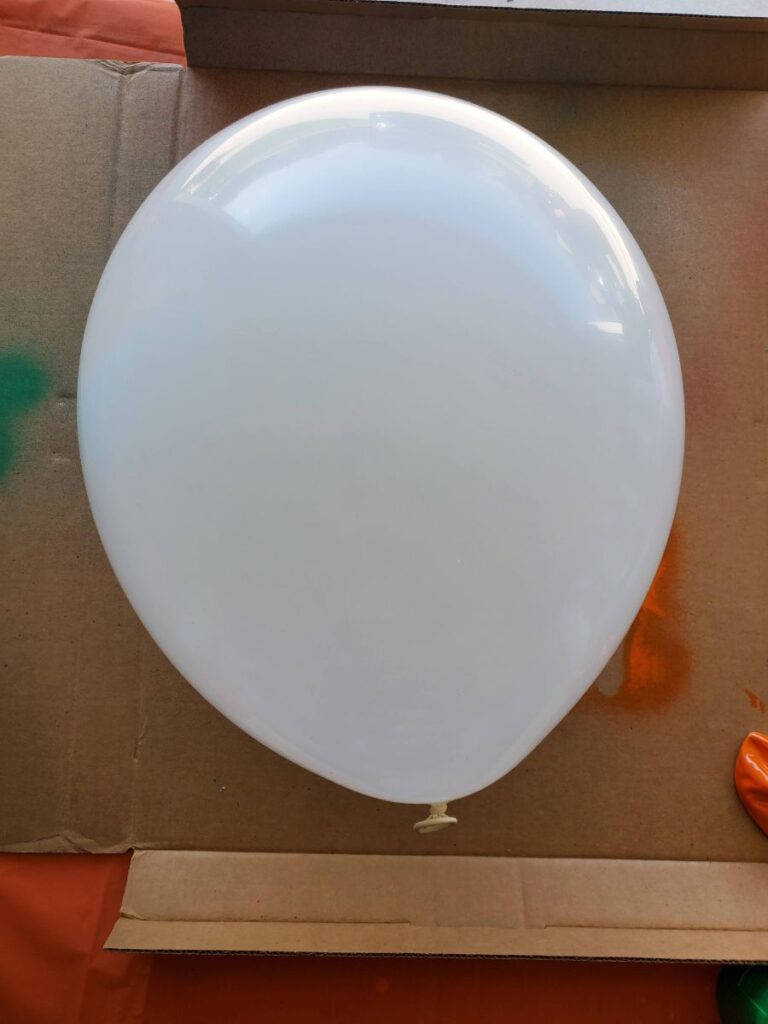
Stencils
If you’re looking to paint something specific on the balloon – use a stencil! I made stencils out of paper and vinyl so that it could easily be formed to the balloon shape.
Tape it down really well. And, be mindful of bleeding!
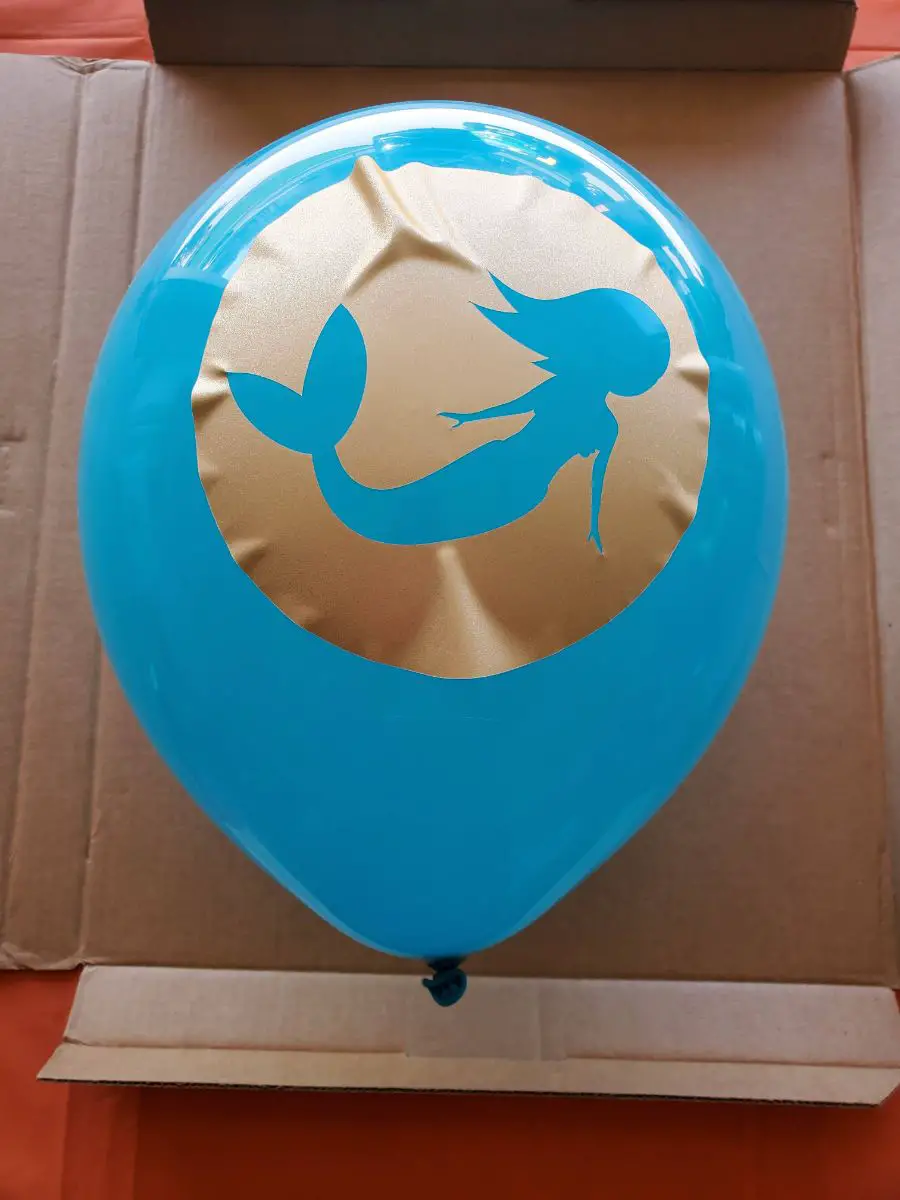

Spray Painting Foil Balloons
Spray paint adheres to and covers foil balloons beautifully!
You might notice while painting the foil balloons that the balloon shrivels a bit. Don’t worry, it is just reacting to the cold temperature of the spray paint.
It will bounce back in no time!


Sometimes, gravity likes to work against us. You can see below that the spray paint I was using was metallic, which is a little bit thinner, so it ran down the side.

Be careful with how you spray. If you need full coverage – spray continuously. You may need more than one coat.
If you need smaller amounts of coverage or are trying to make shapes (like a circle), spray in short, quick bursts.
This technique also works great if you’re trying to stay localized inside of a stencil.
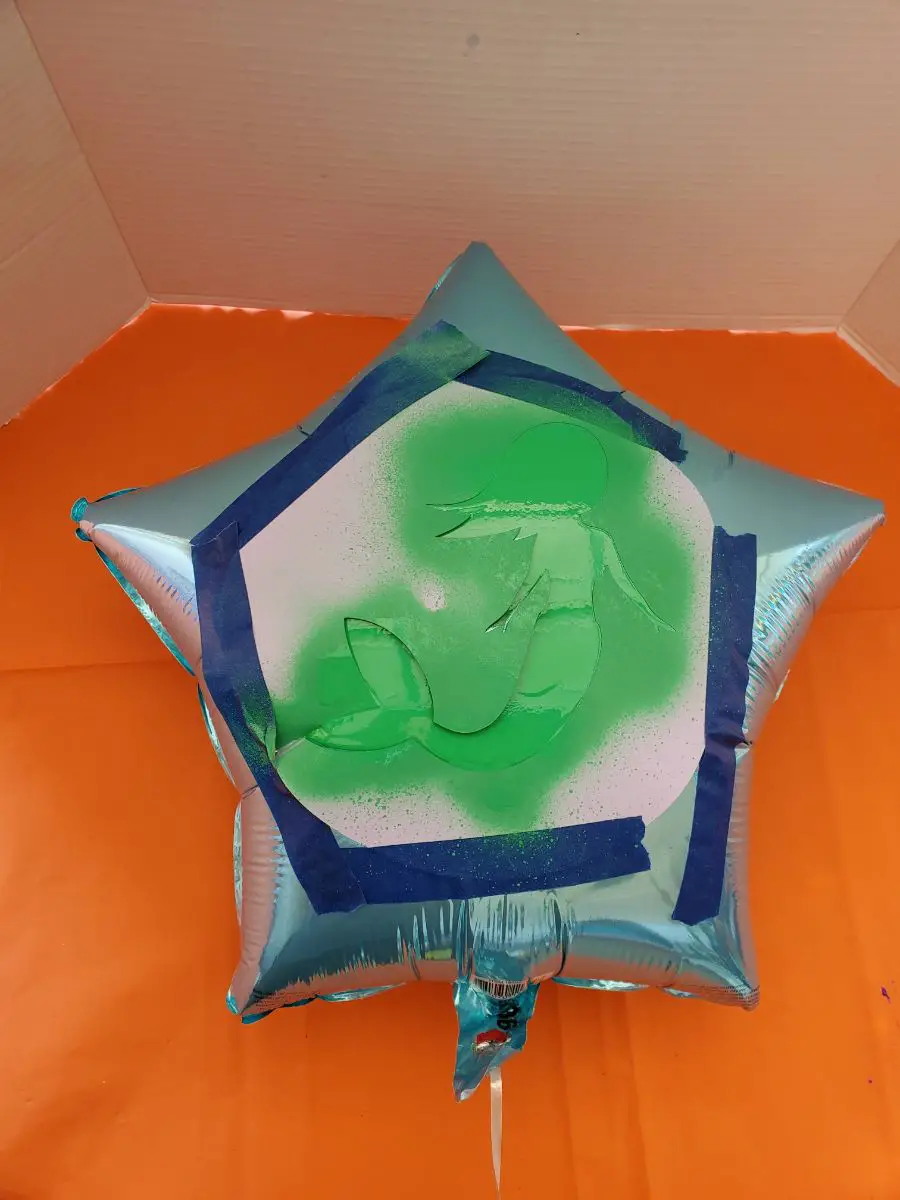
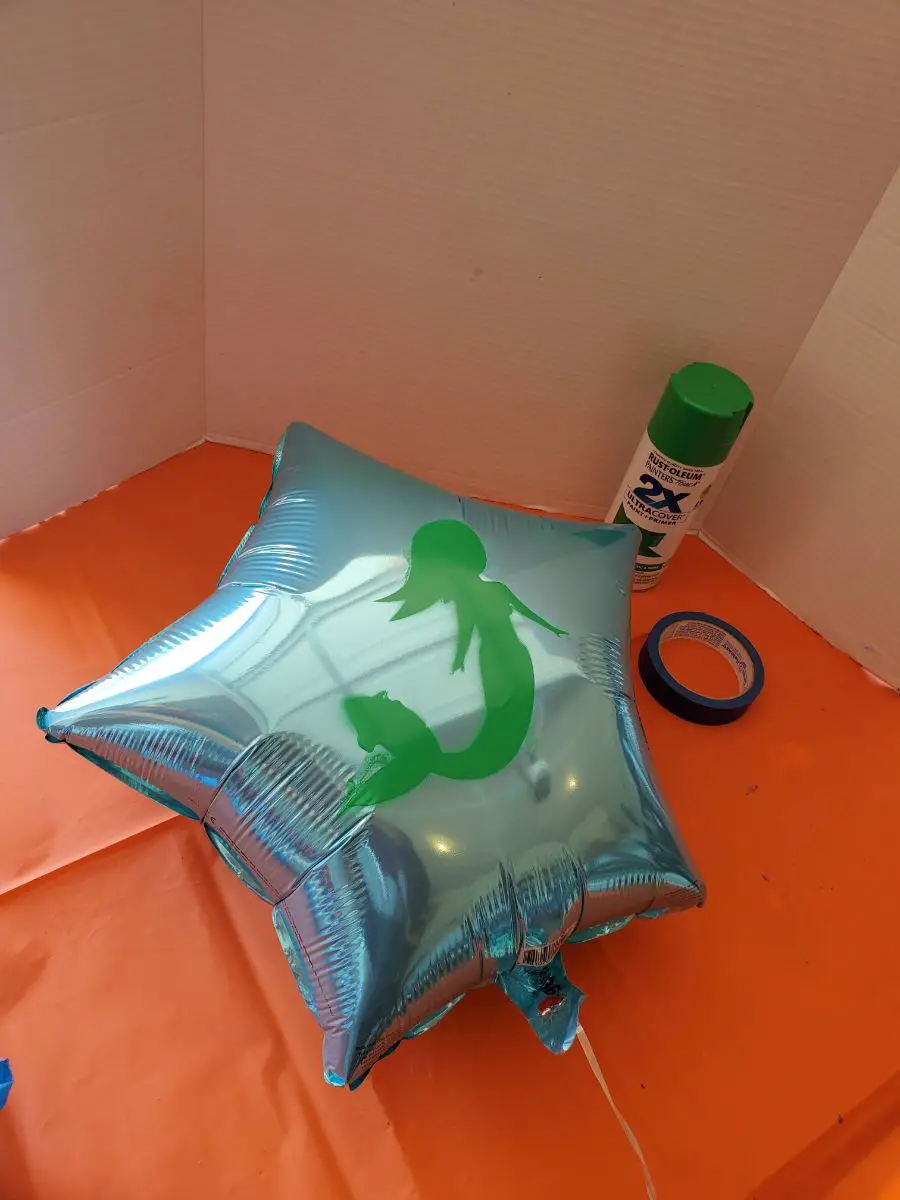
Extra Tip: Because foil balloons are pre-cut to their intended size, try painting the balloon before blowing it up. And, then add any touch-ups afterward.
Spray Painting Latex Balloons
Latex balloons may not be as easy to paint as foil balloons are, mainly because of their rounder shape. They are a little trickier to handle, but they absolutely can be spray painted.
I much preferred to spray paint the latex balloons while taped down. It made it easier to work with them, because I didn’t have to keep them from floating or rolling away.
Latex balloons can be spray painted in full, with fun patterns, and/or using stencils.
Below is an example of a white latex balloon fully covered by spray paint.
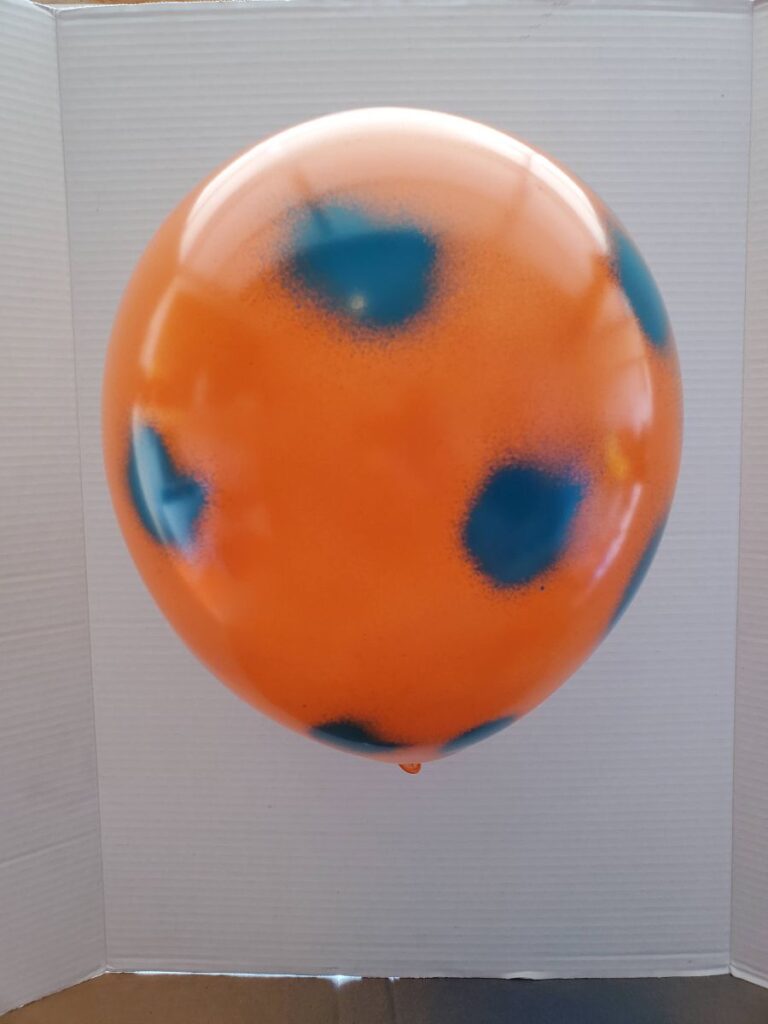
Below is an example of a latex balloon spray painted with a fun pattern.
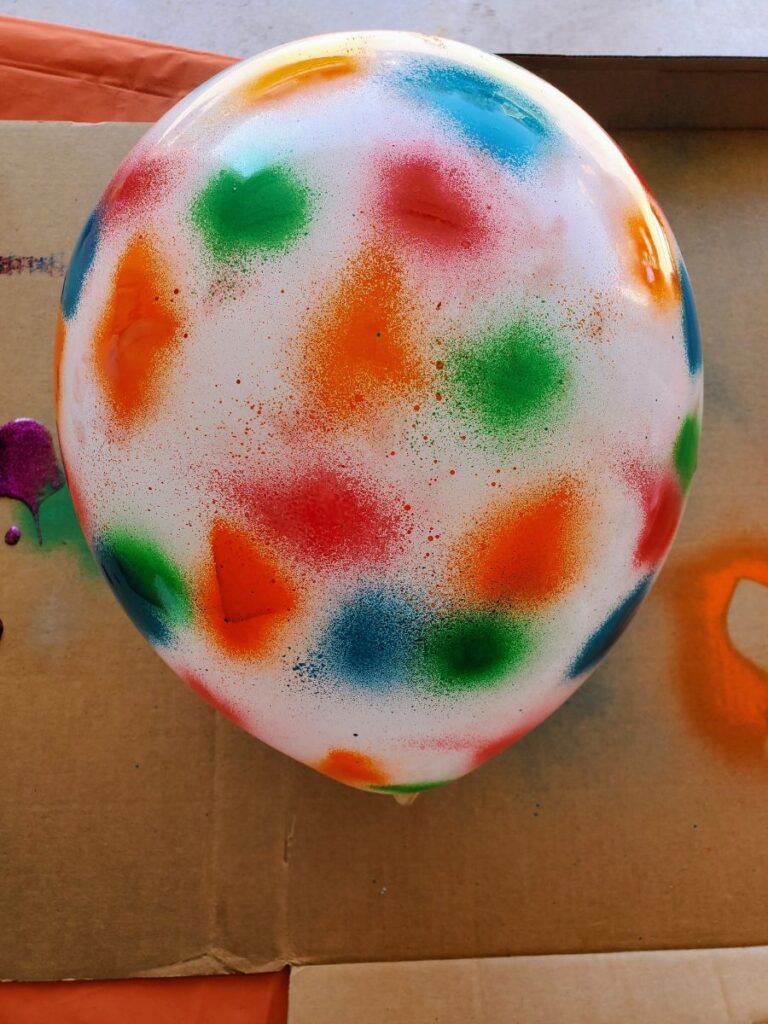
And finally, below is an example of using a stencil on a latex balloon.


Yes, the spray paint did run on this particular balloon (my mistake), but you can see that the inside of the stencil came out great! Sometimes it takes a little trial and error!
Can You Spray Paint Latex Balloons Before Blowing Them Up?
That’s a great question! It would be so easy if we could just cover a balloon in paint and then blow it up, right?
Unfortunately, it doesn’t work. The spray paint dries too fast and when you blow it up, not only will it not have full coverage, it will peel and fly off.
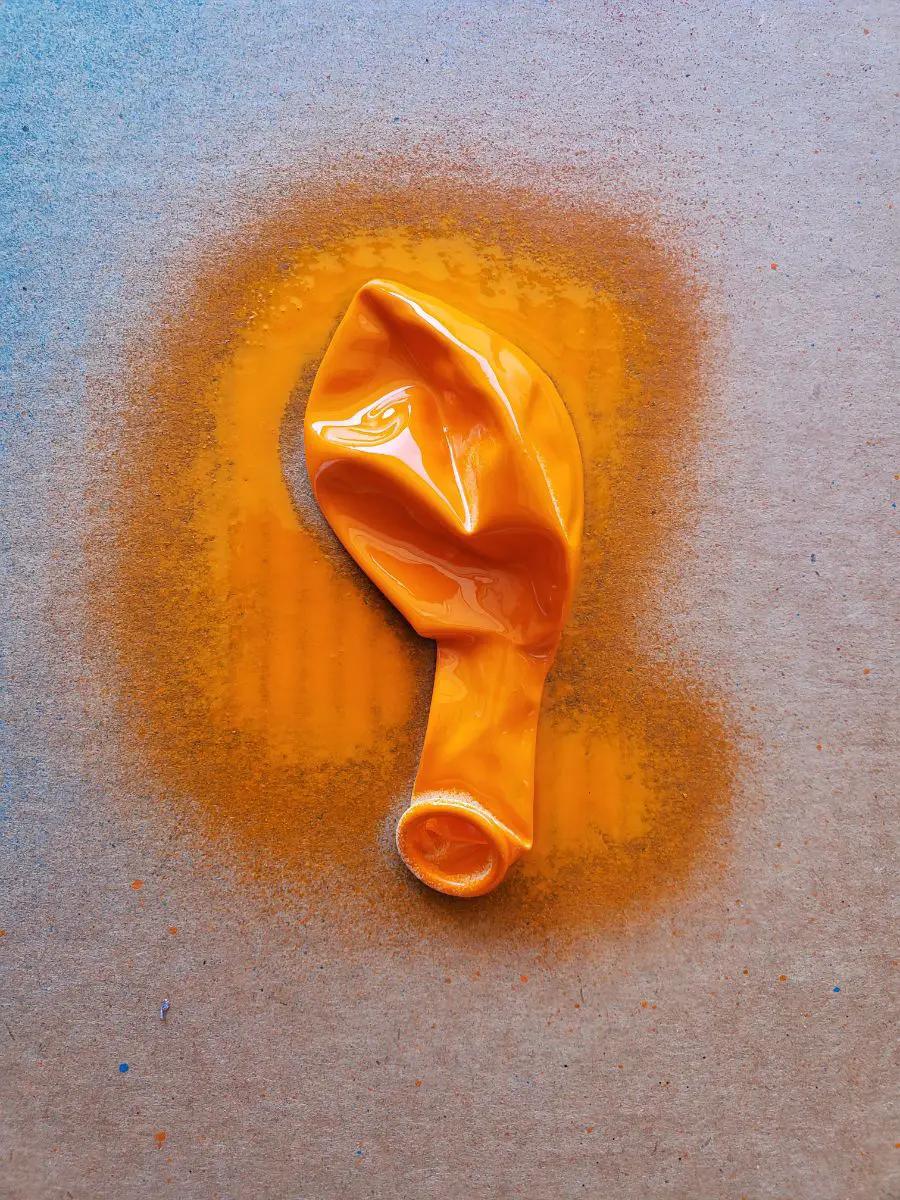

Does Spray Paint Affect the Longevity of a Balloon?
If you’re wondering whether spray paint might increase the life of a balloon, it does not appear that it does.
In fact, for latex balloons, it might be the opposite.
Typically, latex balloons will begin to deflate after a matter of hours.
Helium-filled latex balloons usually last for about 6-8 hours. Air-filled latex balloons may last longer, but they will start to slowly deflate and lose their plump shape in a similar amount of time.
Spray painting a balloon adds a little more weight and stress to the latex. And, it may even speed up the deflating process.
Below is a picture of an air-filled, spray painted latex balloon after just one day.
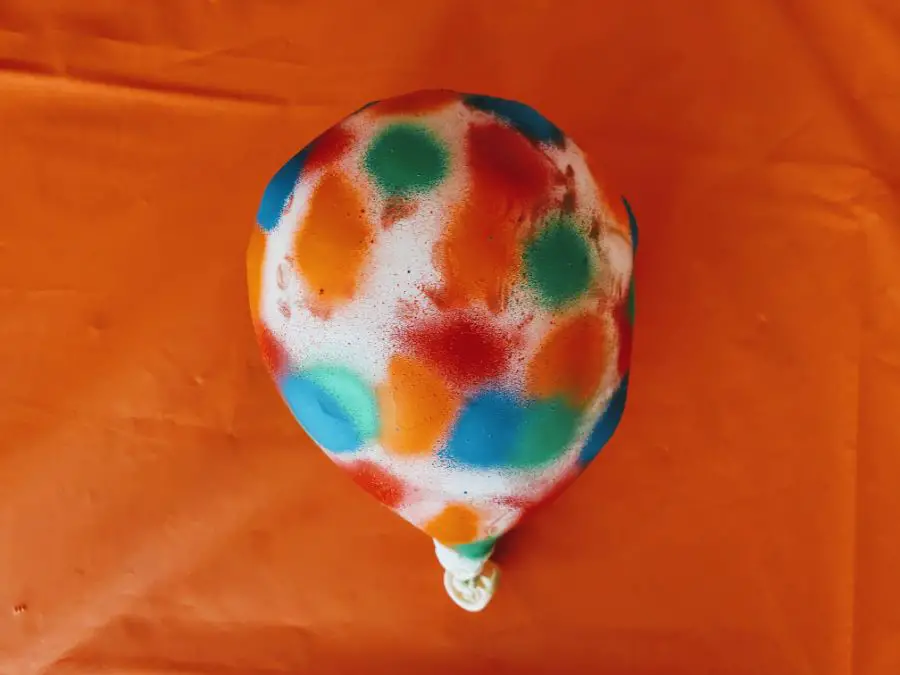
Foil balloons last for days, even weeks – filled with air or helium. Because they are made of a stronger plastic material, they are not porous like a latex balloon.
This means it can hold up to the spray paint. A foil balloon stays inflated just as long as it would without being painted.
Cleaning Up: How to Get Spray Paint Off Skin
Using spray paint can be a messy business. While spray painting balloons, I tried my best to limit the mess, but I still ended up with some paint on my hands.
So, how do you get it off your skin? I found two ways that were effective in removing the paint:
- Using a mixture of dish soap and a little oil (olive, vegetable, or whatever you have on hand). Work up a good lather and scrub the paint off.
- Using nail polish remover. I poured some on a cotton pad and scrubbed off the paint.
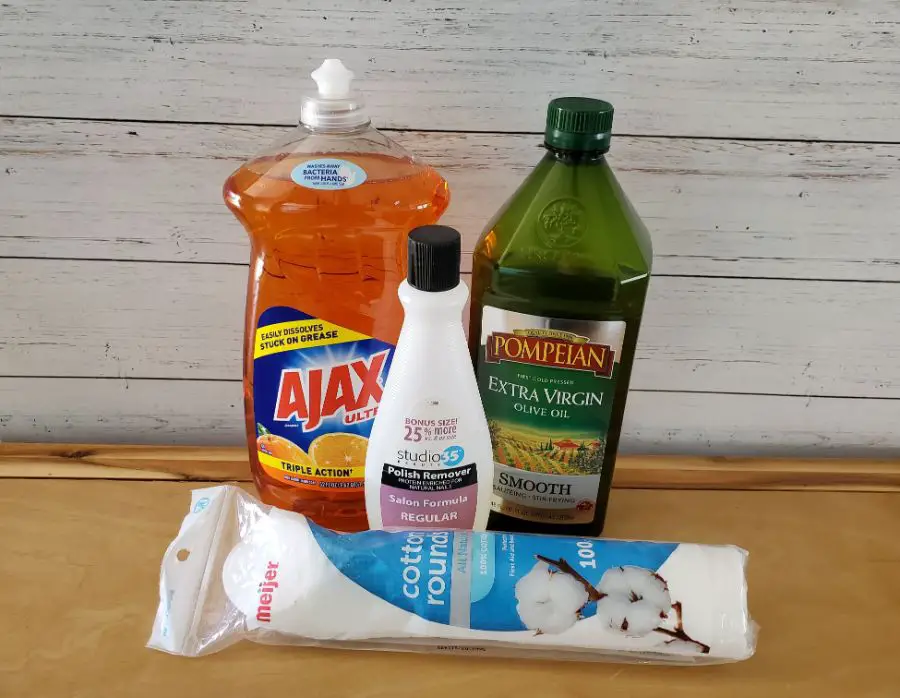
Final Thoughts
Spray painting balloons is fun and a great way to bring a unique dash of creativity to your party.
There’s no better way to make a completely custom balloon that you couldn’t find anywhere else!
And, if you ever want to try customizing a balloon in other fun ways, check out How to Customize Balloons for some more eye-catching ways!

